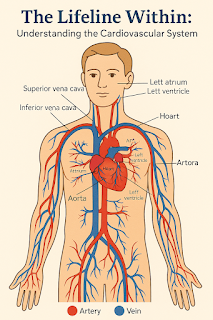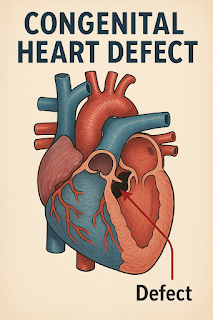Cardiovascular disease (CVD) is a leading cause of death globally. Understanding the various risk factors that contribute to its development is essential for prevention and effective management. These risk factors can be broadly classified into three categories: modifiable, non-modifiable, and other contributing factors.
-
Unhealthy Diet
High intake of saturated and trans fats, cholesterol, sodium, and sugar, and low intake of fruits, vegetables, and whole grains. -
Physical Inactivity
Lack of regular exercise and physical activity. -
Tobacco Use
Smoking and exposure to secondhand smoke. -
Excessive Alcohol Consumption
Consuming more than recommended amounts of alcohol. -
Obesity
Carrying excess weight, especially around the midsection. -
High Blood Pressure
Elevated blood pressure readings consistently above the healthy range. -
High Cholesterol
Elevated levels of LDL (bad) cholesterol, low levels of HDL (good) cholesterol, and high levels of triglycerides. -
Diabetes
Both type 1 and type 2 diabetes increase CVD risk. -
Chronic Kidney Disease
Kidney damage that impairs the kidneys' ability to filter waste from the blood.
-
Age
The risk of CVD increases with age. -
Family History
Having a family history of early onset heart disease. -
Sex
Men generally have a higher risk of CVD than women, though this difference can change with age. -
Race/Ethnicity
Certain racial and ethnic groups have a higher risk of developing CVD. -
Genetics
Certain genetic mutations can predispose individuals to heart disease.
-
Metabolic Syndrome
A cluster of conditions, including high blood pressure, high blood sugar, excess abdominal fat, and abnormal cholesterol levels, that collectively increase the risk of CVD. -
Chronic Inflammation
Conditions like rheumatoid arthritis, psoriasis, and HIV/AIDS can lead to long-term inflammation, which damages blood vessels. -
Mental Health
Depression, chronic stress, and sleep disorders are linked to poor cardiovascular health. -
Air Pollution
Prolonged exposure to polluted air can negatively impact heart health.
Recognizing and addressing these risk factors—especially the modifiable ones—can significantly reduce the likelihood of developing cardiovascular disease and improve overall heart health.
For Enquiries: cardiologysupport@










.jpeg)
.webp)
